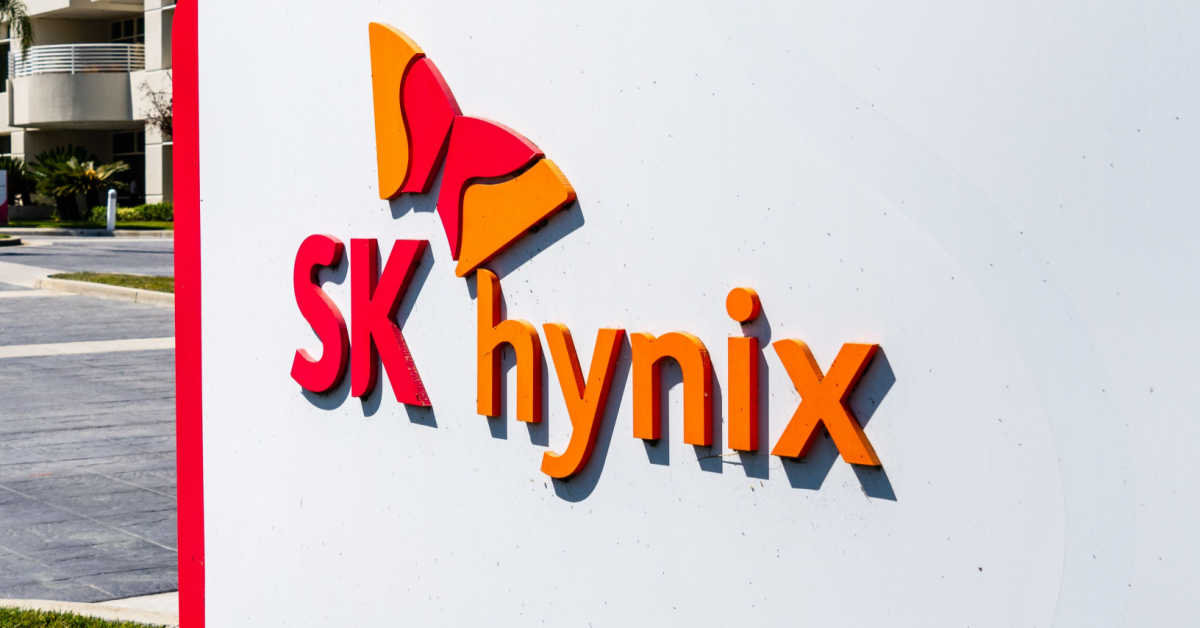SK Hynix Reports First Loss In A Decade As Memory Prices Fall

Memory chipmaker SK hynix saw its first operating loss in 10 years for calendar Q4 of 2022 amid a sharp fall in prices, although it's forcasting a gradual recovery later this year.
The world's second largest manufacturer of memory chips reported revenue of ₩7.7 trillion ($6.5 billion) for the three months, up 4 percent year-on-year, and an operating loss of ₩1.7 trillion ($1.38 billion). This compared to an operating profit of ₩4.2 trillion ($3.4 billion) during the same quarter a year ago.
For the full year 2022, SK hynix revenue stood at ₩44.65 trillion ($36.32 billion), up 4 percent year-on-year, although the operating profit of ₩7.007 trillion ($5.7 billion) was down by 44 percent from the ₩12.41 trillion ($10.09 billion) the company reported for 2021.
"Revenues continued to grow last year, but the operating profit decreased compared with a year earlier as the industry entered into a downturn from the second half," SK hynix said.
"With uncertainties still lingering, we will continue to reduce investments and costs, while trying to minimize the impact of the downturn by prioritizing markets with high growth potential."
The company said that it was holding to its decision announced during the previous earnings call to more than halve its investments this year compared with the ₩19 trillion ($15.46 billion) it spent during 2022. Investment will, however, continue for key products such as DDR5, LPDDR5, HMB3, and markets with "growth potential."
SK hynix managed to increase high-capacity DRAM shipments for the server and PC markets during 2022, while boosting sales of DDR5 and HBM products. It picked out revenues for datacenter SSD chips, which it claimed have more than quadrupled compared with a year earlier.
However, it blamed its operating loss in the fourth quarter on the worsening economic situation that has seen demand for memory products plummet and a resulting fall in the prices such chips fetch.
But there may a silver lining according to SK hynix, which expects to see a gradual recovery in demand starting as global technology companies buy in more memory chips precisely because prices are low.
- Samsung profits and sales slump, hopes for a jump start from cars
- Micron plans staff decimation as demand dips to Great Recession levels
- Intel inside a world of pain as revenue plunges by a third
- More chipmakers report falling revenue as market braces for tough year
"Despite a deeper industry downturn in the first half [of 2023], SK hynix forecasts market conditions to gradually improve into the latter part of the year," the company said.
"Industry experts do not expect an increase in supply of memory chips as market players are planning to reduce investments and production, which will lead the inventories to peak within the first half."
SK hynix is not the only company feeling the pinch from the semiconductor downcycle. Fellow Korean memory maker Samsung has just posted a 69 percent fall in profits and an 8 percent drop in revenue for its Q4 2022 results, while US memory outfit Micron experienced an 88 percent dip in revenue and a net loss of $195 million for the first quarter of its 2023 fiscal year ended December. And Intel late last week posted a $700 million net loss for Q4 2022, with revenues down 32 percent.
Last November, market researchers at Gartner forecast that revenue across the entire semiconductor market will decline 3.6 percent this year, with memory in particular set to fall by more than 16 percent.
"The memory market is witnessing faltering demand, swollen inventories and customers pressing for considerably lower prices," it said.
Gartner's vice president for semiconductors and electronics, Richard Gordon, had earlier predicted that any recovery in the market is likely to start in 2024 and gather pace during 2025.
But SK hynix CFO Kim Woohyun sees reason for optimism in recently launched server chips from both AMD and Intel that add support for DDR5 memory, as well as other trends such as AI.
"Intel's launch of new server CPU adopting DDR5 and apparent positive signs of demand for new AI-based server memory chips bode well for a quick business turnaround," Kim said ®
From Chip War To Cloud War: The Next Frontier In Global Tech Competition
The global chip war, characterized by intense competition among nations and corporations for supremacy in semiconductor ... Read more
The High Stakes Of Tech Regulation: Security Risks And Market Dynamics
The influence of tech giants in the global economy continues to grow, raising crucial questions about how to balance sec... Read more
The Tyranny Of Instagram Interiors: Why It's Time To Break Free From Algorithm-Driven Aesthetics
Instagram has become a dominant force in shaping interior design trends, offering a seemingly endless stream of inspirat... Read more
The Data Crunch In AI: Strategies For Sustainability
Exploring solutions to the imminent exhaustion of internet data for AI training.As the artificial intelligence (AI) indu... Read more
Google Abandons Four-Year Effort To Remove Cookies From Chrome Browser
After four years of dedicated effort, Google has decided to abandon its plan to remove third-party cookies from its Chro... Read more
LinkedIn Embraces AI And Gamification To Drive User Engagement And Revenue
In an effort to tackle slowing revenue growth and enhance user engagement, LinkedIn is turning to artificial intelligenc... Read more

